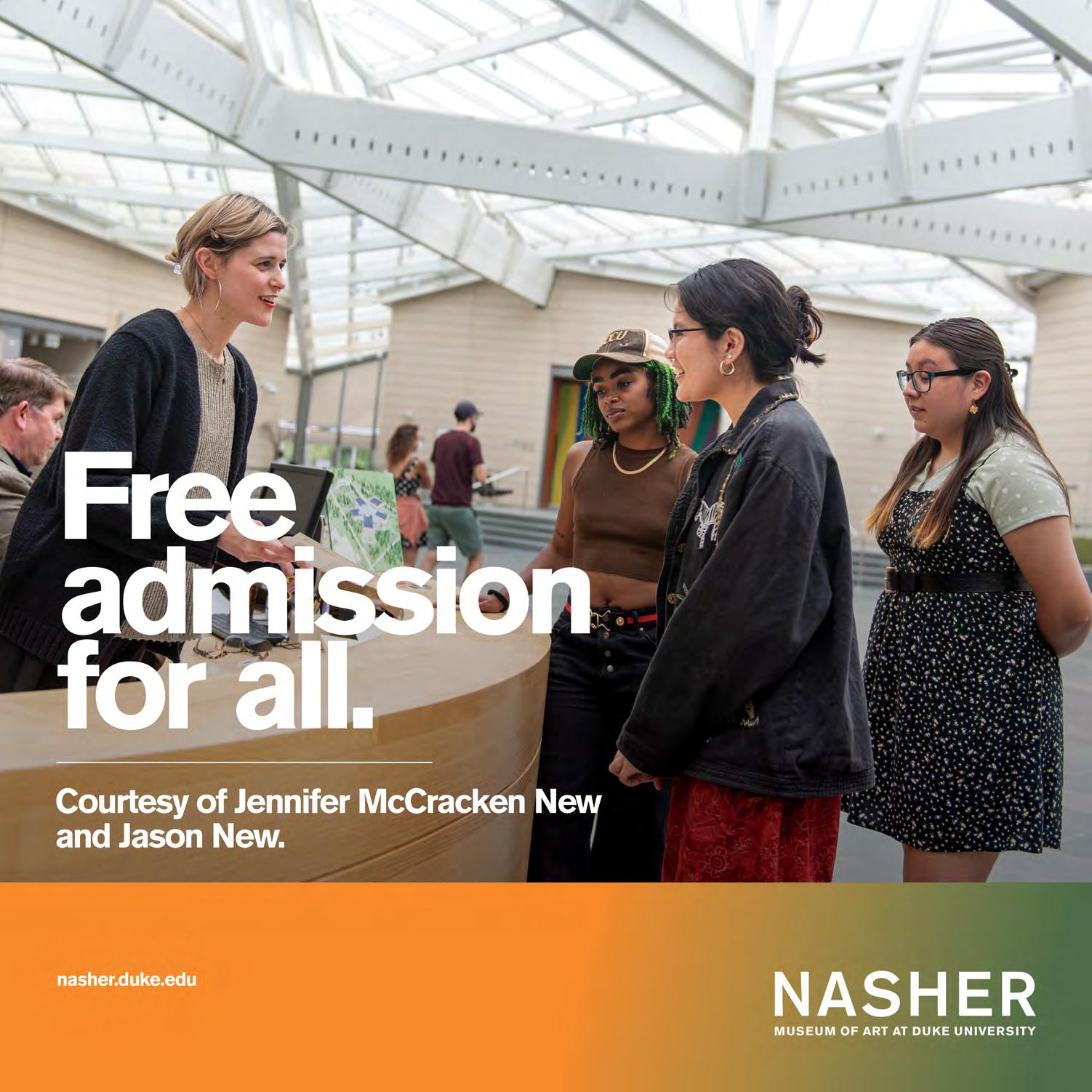




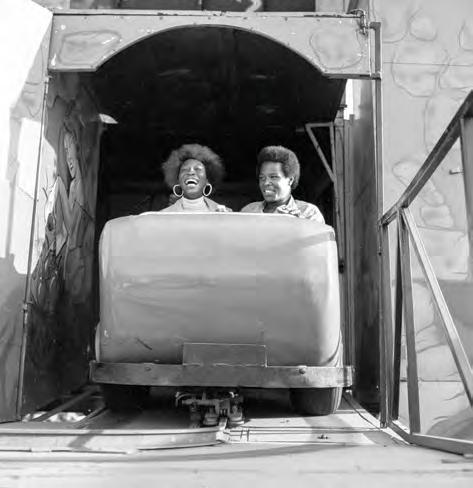















6 After a long wait, North Carolina's Freedom Park is coming together to celebrate the African American experience. BY CHAD KNUTH
8 As an outreach worker with Bull City United, Reshaun Cates was turning his life around before it was taken tragically. BY THOMASI MCDONALD
10 Neighborhood advocates, social justice activists, CAC proponents—and incumbents—are running for the Raleigh City Counil's eight seats.
BY JASMINE GALLUPThe photographer Avery Danziger has shot locations all over the world. But the NC State Fair keeps drawing him back.
SARAH EDWARDSFrom Rattlesnake Corn Dogs to Pepsi-Glazed Mini Donuts: five can't-miss new food oddities to try at the state fair. BY LENA GELLER
Every Friday night at Salsa Social Night in Durham, rhythm is in the air.
BY CHASE PELLEGRINI DE PAUR18 A CLICK! Photography Festival showcase at the Fruit shows never-beforeexhibited Vivian Maier vintage prints. BY SARAH EDWARDS
Reviews of four new local productions. BY BYRON WOODS
“You can just go ahead and put a little sign on Matt Kelly’s grave that says ‘The guy who gets it,’” Scott Howell says, about Kelly's recent purchase of Nana's.
BY LENA GELLERCOVER Design by Nicole Pajor Moore
PUBLISHER
John Hurld
EDITORIAL

Editor in Chief
Jane Porter
Managing Editor
Geoff West
Arts & Culture Editor
Sarah Edwards
Staff Writers
Jasmine Gallup
Thomasi McDonald
Lena Geller
Copy Editor
Iza Wojciechowska
Interns
Chad Knuth, Lia Salvatierra
Nathan Hopkins
Contributors
Madeline Crone, Grant Golden, Spencer Griffith,
Lucas Hubbard, Brian Howe, Lewis Kendall, Kyesha Jennings, Glenn McDonald, Nick McGregor, Gabi Mendick, Dan Ruccia, Rachel Simon, Harris Wheless
CREATIVE
Creative Director
Nicole Pajor Moore
Graphic Designer
Jon Fuller
Staff Photographer
Brett Villena
ADVERTISING
Publisher
John Hurld Sales Digital Director & Classifieds
Mathias Marchington
CIRCULATION
Berry Media Group
INDY Week | indyweek.com
P.O. Box 1772 • Durham, N.C. 27702
Durham: 320 East Chapel Hill Street, #200 Durham, N.C. 27701 | 919-286-1972
Raleigh: 16 W Martin St, Raleigh, N.C. 27601
EMAIL ADDRESSES
first initial[no space]last name@indyweek.com
ADVERTISING SALES
advertising@indyweek.com

Raleigh 919-832-8774
Durham 919-286-1972
Classifieds 919-286-6642
Contents © 2022 ZM INDY, LLC
All rights reserved. Material may not be reproduced without permission.
“This independent voter has looked at both sides, and I’m voting for the team that has the best interests of middle class and working families in mind,” wrote commenter ANDREA HOWARD. “I am voting a straight Democratic ticket. There is a grave danger for massive cuts in Social Security and Medicare if the Republicans take over. In fact, just the other day, Republican Senator Lindsey Graham announced that he wants to see Social Security eligibility raised to the age of 70.”
Other readers had questions about Beasley’s campaigning strategy.
“She has my vote but, so far I have only seen one TV ad from her,” wrote reader DAVID T. GURNEY. “I cant help but feel that if they put a more aggressive campaign like John Fetterman in Pennsylvania, it would be a wipe out.”
“Beasley needs to spend commercial time & expose TB once & for all,” wrote commenter BETTY WYATT DAVENPORT. “He lies about her past & what she hopes to accomplish! TB would not need to be spending so much … terrible much … millions upon millions to get elected if he had truly served the people instead of taking. The twisted commercials on CB are to build fear @ divert from his horrible record.”
“Dear Ms. Beasley: I support and have donat ed to your campaign multiple times,” wrote commenter DEAN BILLINGS. “I know you are trying to take the high road, but Budd and McCo nnell are turning people against you with their constant and false negative ads. Please have your team respond to these ads with ads. They have people scared to death that armed IRS agents will break into their homes like Democrats are some right wing fascist goons. These ads must be answered and Budd and Mconnell need to be called out as the liars they are. They are playing dirty. We need you in the Senate, but to ignore these attacks would be a mistake.”

Some Budd supporters showed up to comment, too.
“Why is Beasley losing support from the law enforcement coalition?” asked commenter MIKE ROSTAD. “Maybe her anti-cop rhetoric has something to do with it? Budd seems to be the best choice.”
“Bud has business experience,” wrote commenter RE EVERHART. “While Beasly has nothing but lawyer. We need business in Washington. Running a country is a business. Not bs attorneys. I am for business. BUDD. Tell me where Beasly has anything other than hot air to offer.”
“A Christian can’t justify voting Democratic,” wrote commenter KEN WATERS
“Which kind, there are so many flavors,” commenter ERIC SIMPSON rejoined.
“Oh yes I can,” responded commenter MARGARET MALONE LARSON.
There are 28 days until Election Day. We still have a long way to go.
Also last week, for the web, Jasmine Gallup wrote about a small group of homeowners from Raleigh’s wealthy Hayes Barton area who want to stop a 17-unit luxury townhome development from being built in their neighborhood. No, it’s not affordable housing, but the project would add density.
From Twitter: “Raleigh didn’t take care of the natives that have always lived here. They took them out of their homes and moved in new residents. We are the ones that have been born here, went to school here. Our parents worked and raised families here. While they kept it stagnated,” wrote commenter MAMA SERATI
“I’ve lived in Raleigh for 23 years in an old neighborhood. I am not wealthy. You cast a wide net to claim that everything in the missing middle policy is opposed. The problem is the POLICIES (that’s plural, if you didn’t notice) incentivize bulldozing in unintended ways,” wrote commenter BARRY ERIKSEN. “$2 million dollar townhomes are not ‘AFFORDABLE HOUSING!’”
“If the plan was for a complex of affordable housing units, that neighborhood would still fight it,” replied commenter @SHAWNGRANNIS
“Stop giving these people airtime!! The story is we need more housing, not white people want to stop housing!!” wrote commenter RALEIGH MONITOR
“I am gonna put a home depot tuff shed in the middle of a cul-de-sac and cousin Eddie it every morning … Sh*tters full,” wrote commenter BEER GORILLA
Honestly, Beer Gorilla, it would be funny to see you try.
week,
wrote a long profile looking at U.S. Senate candidates Cheri Beasley and Ted Budd, comparing and contrasting their campaigns, platforms, and personalities. On Facebook, readers had a lot of thoughts about Geller’s piece.
Future generations will one day learn about the large-scale removal and replacement of one people with another on a scale not seen since urban renewal. Will we be able to tell them we did everything possible to stop it?
BY NATE BAKER backtalk@indyweek.comIn the 1950s, ’60s, and ’70s, the federal government embarked on programs of urban renewal and freeway construction, dramatically reshaping American cities and lifestyles. The political coalitions behind such programs were diverse and often tenuous and imbalanced. Wendell Pritchett at the University of Pennsylvania Law School wrote that “renewal programs were controlled by a small number of real estate interests and politicians …. Sever al studies have shown how urban elites promoted rede velopment to reorganize urban areas and to protect and enhance their real estate investments.” Similarly, con ceived by elite coalitions and lobbied by industrial inter ests in oil, automobile manufacturing, and road construc tion consistent with the political economy of car depen dence, massive freeway construction projects were carried out across the country.
In Durham, historian Jean Bradley Anderson document ed that, with the backing and support of lending and real ty companies, construction, architectural, and legal firms, and influential civic groups, the city combined local bond money with federal dollars to embark on large-scale rede velopment projects that demolished homes and business es. NC 147, the Durham Freeway, tore through the once thriving and distinct Hayti District, displacing over 4,000 residents and 500 businesses, and the culture that went with it. The urban, walkable built pattern of Hayti was replaced with automobile-oriented suburban city design. “Before the highway came through and before urban renewal, we literally used to walk everywhere,” explains Constance Wright, a Durham resident and community organizer who grew up in the Hayti District. “Wherever we wanted to go, we would walk.”
As the South crept out of the Jim Crow era, one insti tutionalized system of racism was slowly replaced with other more opaque, decentralized, and deceiving but cruel forms of racism and class-based exploitation. The new system included “right to work” state laws and the destruction of labor unions, prohibitions on rent control and minimum wage policies, white flight and inner-city disinvestment, nullification of development impact fees and other progressive forms of public revenue genera
tion, and the defunding and privatization of public hous ing and public schools.
The role of government changed in this process in ways that “promote, intensify and extend market rule,” as urban researchers Gilles Pinson and Christelle Journel observe. Laissez-faire real estate policy regimes of Durham and other American cities and ill-serving and inadequate reg ulations—combined with corporate dominance of federal and state policy making—unleash vicious effects of neo liberal capitalism.
policy making, and dominance of individual private prop erty rights particularly benefiting the corporate finance, insurance, and real estate industries. Like during urban renewal displacement, residents once living in tight-knit walkable communities with access to services and transit, but also victims of decades of disinvestment, are pushed out when investment finally arrives. Some residents are pushed into the city’s periphery where land is cheaper but transportation more expensive and where each year Durham approves over 1,100 acres of corporate-fueled, automobile-dependent sprawl lacking adequate services and inaccessible to transit. Many residents are pushed out of Durham entirely.
Black populations in some neighborhoods have under gone mass displacement in alarmingly short time periods. In one census block group, where local developer Matt Lee hopes to displace 20 families from their apartment building to construct townhomes, the Black population plummeted from 80.5 percent in 2016 to 43.8 percent in 2020, according to census and ACS data made avail able by Durham-based nonprofit DataWorks NC. In total numbers, the Black population in that block group alone fell from 930 to 403.
We now face a modern-day moral crisis in Durham. Hun dreds of residents, especially Black, Latino, and low-wealth residents of all races living near services, transit, and walk able neighborhoods, are once again being uprooted and displaced by profit-motivated forces, replaced by wealthier residents following high-wage jobs and seeking an urban lifestyle—and with the means to attain it. “Most of the areas in Durham that I have lived have either gentrified or they no longer exist at all,” Wright says. “Because I have seen what big development does as far as displacing peo ple from what they know, I just don’t think it’s fair for them to be able to come in here and just keep displacing people.”
This time, instead of government channeling busi ness alliances to build large-scale projects, profit-seeking interests channel themselves through discrete and decentralized means, like opportunity zones, supply-side
In another census block group, where the South side neighborhood is located, residents experienced state-sponsored gentrification in the 2010s. Phase three of a $48 million affordable housing project involved demolition and reconstruction of 48 affordable sin gle-family homes. However, only 13 percent (12 of 94) of Black applicants for the program were preapproved for homes, compared with 60 percent of white appli cants. The houses were made only temporarily afford able, resulting in the total loss of that stock of afford able housing to the speculative real estate market just years after project completion. The Black population in that block group fell from 77.3 percent in 2016 to 46 percent in 2020.
Other census block groups in desirable locations close to jobs and services have undergone similar patterns.
Not since urban renewal has Durham witnessed such aggressive displacement of residents and culture. While
“I just don’t think it’s fair for them to be able to come in here and just keep displacing people.”
some residents, especially renters, are forced out by unreg ulated landlords, homeowners face coerced displacement through predatory buying practices as well as unplanned inheritances and the regressive nature of property taxes.
Even if they wanted to use them, local governments in North Carolina have been stripped of key policy tools, not to mention desperately needed financial resources, to be able to stop the current market-fueled displacement and provide stable housing. But they do have tools to dull gen trification’s sharp edges and provide some protections to marginalized residents. For example, Durham should cre ate and implement a housing plan as Wake Forest is in the process of doing and establish a small area planning division that prioritizes areas that are home to vulnerable populations undergoing intense development pressures. The city also needs to end suburban sprawl and ensure all new growth consists of complete communities that incorporate sustainable design and equitable social ele ments—changes that thus far have been thwarted.
In 2019, Durham residents approved an affordable housing bond, and the city, county, and Durham Housing Authority have used local and federal dollars for affordable housing, including RAD conversions, but ultimately the dollar amounts fall far short of need. Meanwhile, low-in come housing tax credits and other local, state, and fed eral supply-side funding mechanisms often result in only temporary affordability, inevitably exacerbating problems for future generations. Affordable housing is critical infra structure, just like other types of public infrastructure, and prioritizing the maintenance and growth of perma nent affordable housing stock must be a central goal of an equitable city.
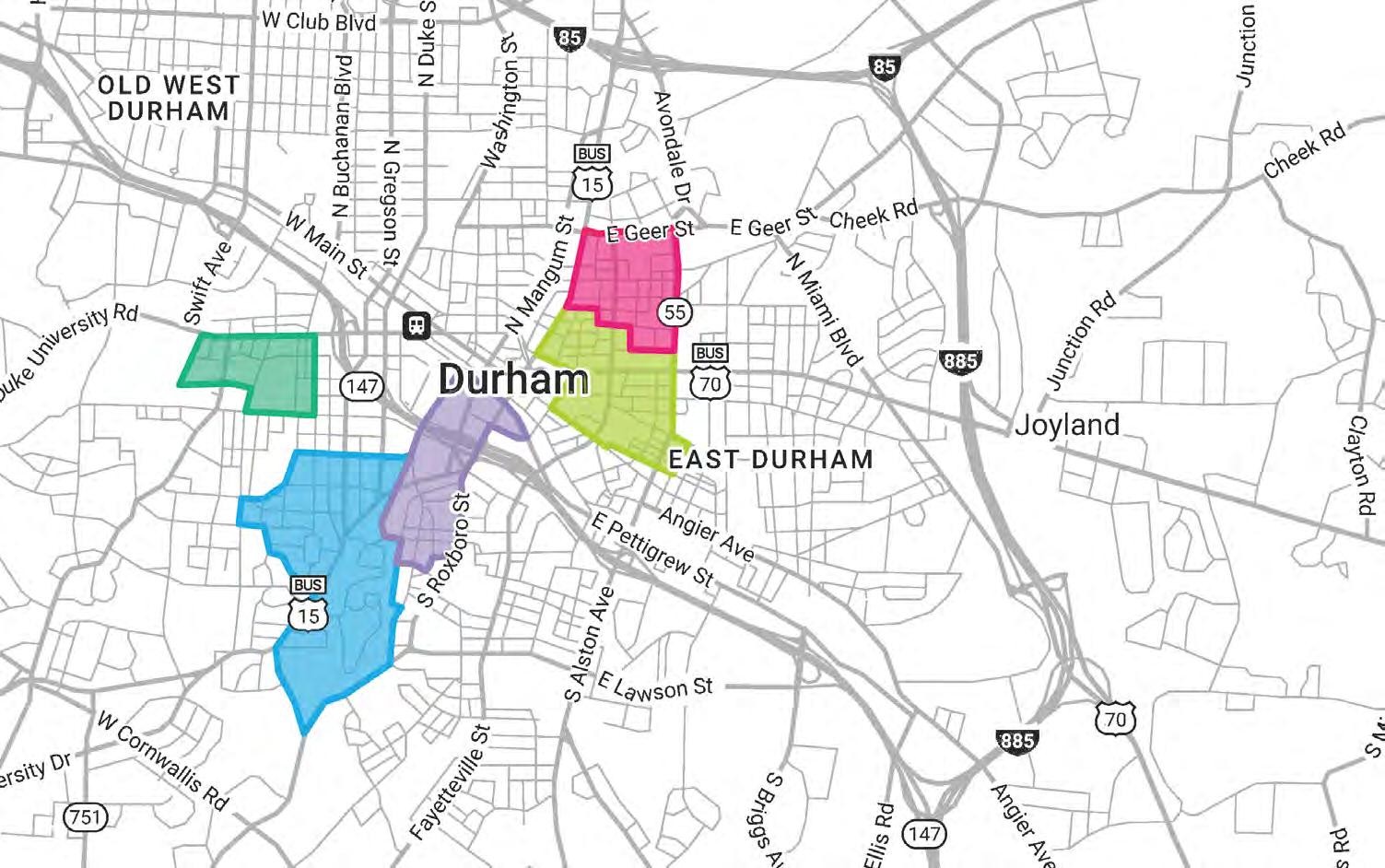
Combating displacement will require a broad patchwork of intentional planning policies, especially leveraging the power of zoning and implementing a variety of measures that help allow vulnerable residents to remain in their neighborhoods, even as neighborhoods grow, change, and evolve. “There has to be a better way for developers and
communities to be able to connect, work together, put their ideas together,” says Durham resident and communi ty organizer Vanessa Mason-Evans. In Durham, the battle for an equitable city consists of two fronts: One is pushing the city government to make use of the underutilized tools it already has available. The other is building momentum to enact changes needed at the state and federal levels. Every day, more vulnerable residents are moved out of their homes and neighborhoods, often pushed to the sprawling suburbs Durham enables on its outskirts, areas built for automobiles and without accessible services. Many residents are pushed out of Durham entirely. Busi nesses and civic spaces, like churches, are also being dis placed or demolished. We have an urgent moral obligation to fight against displacement and build a more inclusive city with every policy tool available. W
Baker is an urban planner and member of Durham’s Planning Commission.
North Carolina’s Freedom Park celebrates the African American experience.
BY CHAD KNUTH backtalk@indyweek.comAs Confederate statues continue to topple, the centerpiece of North Carolina’s first monument to honor the African American experience has final ly been erected in Freedom Park, just one block from the state’s capitol building in downtown Raleigh.

“This monument makes an important statement about freedom from [the per spective of] the Black experience in a way that hasn’t been done before,” says Regi nald Hildebrand, a member of the Freedom Park Board of Directors.
The park will offer visitors a space to gather to reflect on history and celebrate the future, and while the remainder of the park is still just shy of a year away from completion, the installation of the 40-foot-tall metal structure dubbed the Beacon of Freedom is a major milestone for the project.
“It took us years and years to raise the $6.5 million that we needed,” explains Mar sha Warren, who has been with the proj ect since its inception and is one of the founding members of the advisory board for Freedom Park.
Warren is the former director of the Paul Green Foundation. In 2000 the foundation had come to the realization that North Car olina was in need of a monument to honor and celebrate the African American experi ence unique to the state, a realization that ultimately catalyzed the decades-long pro cess of what has now become Freedom Park.
The beacon, along with the rest of the monument, was designed by renowned architect Phil Freelon of Perkins & Will in
2016, shortly after his team completed the recently dedicated Smithsonian National Museum of African American History and Culture on the National Mall in Washing ton, DC. Freelon was chosen to design the park to be “a testament of Truth about our past and a beacon of Optimism about our future,” according to the Freedom Park board’s website. The acclaimed architect died from ALS in 2019.
But even after choosing an architect and acquiring the necessary funding for the park project, several unforeseen delays occurred, further pushing back the park’s completion.
At one point a major steam pipe was found to be buried below the site, and shortly thereafter, an archeological site was discovered during the dig, unearthing remains of the home of Thomas Devereux
Hogg, a businessman who had enslaved 18 people. The site was then contained and excavated by state archeologists.
“It just took a long time,” Warren admits. But she is pleased to have come so far.
Reginald Hodges, chair of the construction committee on the Freedom Park Board of Directors, has been on the project since 2004.
“When [Freelon] started putting togeth er what the beacon could look like, he had several different interpretations,” Hodges says, turning to admire the towering beacon standing before him. “I’m really glad that we chose for the two points to be going in similar directions. [Freelon] said that if you’re going to do a symbolism of a flame, a flame comes out in different directions, but ultimately that doesn’t reflect unity. What
we have here shows you the flame, but it also shows you unity.
“The symbolism of this is the flame that burns in Black people to be free, which has been passed on from generation to genera tion. That’s what it means.”
Hodges fell quiet, letting his words settle in.
Along the walls surrounding the bea con will be 140 molded panels that will have inscribed on them quotes from Afri can Americans, beginning from as early as the 1700s and running all the way up until 2020, the last of the quotes being “I can’t breathe,” by George Floyd.
“When people talk about this being a park that honors the African American struggle for freedom, that’s probably the wrong way of saying it,” Hodges continues. “More accurately, this park is honoring Black North Carolinians.”
“Everyone depicted in here is a North Carolinian, George Floyd included; he was from Fayetteville,” Hodges explains. “There’s going to be a quote on the wall that reads, ‘The struggle for freedom begins every morning.’ You didn’t need great people to make quotes like that.”
Hodges says the board members want ed to make sure some of the quotes were very simple “so that younger students coming in could understand the meaning on the wall.”
Warren seconds the importance the
monument will have on educating students.
“This is about the schoolkids who come to Raleigh every year to study North Caro lina history,” she says. “We wanted to level the playing field. You have the old capitol grounds with [statues of] white suprem acist governors and Confederate soldiers, while more than 25 percent of our kids who come here are African American.”
In the past five years, fervent national movements have demanded the removal of Confederate monuments, with 73 removed or renamed last year alone.
While these movements in themselves don’t rectify a long history of paying hom age to slaveholders, there is hope in that the construction of monuments such as Freedom Park will allow for new genera tions to better grapple with the nation’s tumultuous past, bringing unity where there is division.
As advisers and board members stand below a canopy of 200-year-old oaks at the future site of Freedom Park, Hildebrand speaks with conviction.
“Our call is to make sure that the torch that is symbolized by that beacon never goes out. That the struggle for freedom continues. When people come to this park they’re not just learning about his tory, although they are, but that they are also being inspired for what will go on in the future.”
W



As a worker with Bull City United, Reshaun Cates was trying to turn his life around before it was tragically taken.
BY THOMASI MCDONALD tmcdonald@indyweek.comReshaun Cates took one life, but he saved so many more.
Cates, in 2009, pleaded guilty to sec ond-degree murder for a home invasion rob bery two years before that left Eva Jacobs, a Cedar Grove woman, mortally injured with multiple gunshot wounds.
Cates, after serving nearly 16 years in prison, was released in 2020 according to state corrections records. He wanted to make amends and started work last year as a “violence interrupter” in several of the city’s toughest communities, including the one where he grew up.

Cates, and nearly two dozen young men and women like him, want to heal their communities by doing outreach work with Bull City United (BCU), a joint county and city initiative that relies on reformed gang members to stop gunfire in violence-prone neighborhoods before it happens.
Cates’s journey to redemption was inter rupted by the type of gun violence he want ed to stop. On October 2, police reported that someone had shot Cates dead. Offi cers found him in a blue Honda that had stopped on the off-ramp of I-85 North on Hillandale Road.
Police have not disclosed a motive for the shooting, but investigators think he was targeted.
Cates was the father of a one-year-old son. He was 34, and 11 days from celebrat ing his next birthday.
On another warm, sunny Sunday after noon, exactly one week after Cates died,
his family, friends, and coworkers paid their respects during a viewing at Hanes Funer al Service in East Durham. Cates’s body was at rest in a red metallic casket adorned with a spray of red and white blooms and baby’s breath. He was outfitted in a Chica go Bulls basketball jersey. A Chicago Bulls cap lay atop his chest. A fresh haircut and long, tapered sideburns framed his youthful coconut-brown face.
“He was a good-looking boy,” Franklin O. Hanes, the funeral services director, said while looking at the red coffin.
“He looks like he’s asleep,” said his moth er, Doris Cates, who was at the viewing with several other family members.
Doris told the INDY that Reshaun was the oldest of her six sons, who was “fun-lov ing and loved to make you laugh” while he was growing up in the Cornwallis apart ment complex where they lived. His nick name was Marbles.
He also loved fishing, playing cards, and playing basketball.
Doris says her son coached a city league youth basketball team that played its games at the Hope Valley Baptist Church gym, won the league championship this year, and recently had a banquet to honor his young charges.
She says her son loved his little boy, Mal akai, most of all.
“Malakai was his world,” she says. “He put everything on hold when he was with his son. You couldn’t get him to do noth ing when it was time for ‘daddy duties.’
He would put you on hold for Malakai. He would put me on hold for Malakai.”
Reshaun Cates was 22 in 2009 when an Orange County superior court judge sen tenced him to a maximum of 16 years in prison after he pleaded guilty to second-de gree murder for the 2007 home invasion robbery and shooting death of Jacobs in Orange County. The News of Orange Coun ty at the time reported that the robbery netted a stolen shotgun and about $300 worth of marijuana.
Cates served 15 years and 11 months behind bars before he was released on June 23, 2020.
Doris Cates, while speaking late last week with the INDY, acknowledges her son’s trou bled past but says he had become very fam ily oriented since his release from prison.
“He got out and went straight to work,” she says. “That was his mentality, and to enjoy his family. His girlfriend got pregnant, and he enjoyed his son. He wasn’t thinking about any trouble. He went to prison, but he turned his life around. He was working with Bull City United. He wanted to see everyone happy.”
Two young men, one wearing a lime-green BCU shirt, walked into the funeral parlor for the viewing. They were accompanied by a young woman carrying a baby on her hip.
“There go Bull City United right there,” Doris Cates said by way of welcoming the trio who had arrived to pay their respects.
After exchanging greetings, they quietly walked over to the coffin, signed the visi tor’s book, and left.
“Probably hundreds,” one of the young men, Zaquan Gentry, replied later when asked how many people he thought Reshaun Cates had helped avoid gun violence.
Gentry told the INDY he was one of those people Cates had helped. He last spoke with him the week before he died.
“He told me, ‘I’m helping you protect your son,’” Gentry said.
The other young man was wearing the BCU shirt. He declined to give his name but said he knew Cates “before and after.”
“I saw the transformation,” he said. “He saved fathers, daddies, brothers, cousins, kids, grandkids, and great-great-grandkids.”
Doris Cates says her son had been work ing during a probationary period for a little over a year with BCU. He worked in sev eral communities, including the Cornwallis apartment complex where he grew up.
“He had just got hired full-time, [per manently], back here about a month ago,” Doris says.
The slain man’s mother says he loved BCU and getting out into the community to help mediate disputes that threatened to spill over into gun violence.
“He was mostly in Cornwallis, and McDou gald Terrace, and Southside,” she says. “He loved those kids. He would do everything he could to keep those kids on the right track.”
Doris says her son often talked about his work. It was purposeful and felt like he was making a difference.
“He loved working there, and he loved the people he worked with,” she adds.
Within the BCU ranks, Cates was among a cadre of trained county-funded teams of “violence interrupters’’ and outreach work ers who started in the gun- and gangplagued Southside neighborhoods on South and Fargo Streets and the McDougald Ter race public housing complex in 2016. The aim of the initiative is to address and treat violence as a public health issue not unlike cholera or influenza outbreaks. The local initiative is modeled after CeaseFire, an antiviolence program developed in 2000 and implemented in Chicago neighbor hoods where there are high rates of shoot ings and gun murders.
There have been marked results.
Two years ago, BCU reported that between March 1 and September 12, 2020, there were 556 shootings throughout the city. But only 63 happened in BCU’s target areas: McDougald Terrace, which in 2015 was deemed the most violent neighbor hood in the city, and Southside, the city’s second-most-violent neighborhood.
In response, city and county elected lead ers last year reached an interlocal agree ment that expanded BCU to four more gun fire-prone neighborhoods.
BCU’s work has also been noteworthy in recent months. According to data made public by the initiative—between July of last year and June of this year—BCU workers who were formerly part of the city’s gun violence dilemma had participated in nearly 900 mediations to resolve conflicts in their communities before they could escalate to deadly gunplay.
The end result: only eight of the city’s 24 homicides during that period were reported in areas where BCU violence interrupters are working.
In early August, the county’s board of commissioners unanimously approved the more than $6 million purchase of the old John Avery Boys and Girls Club, which will house the newly developed Neighbor hood Intervention Services department that will house BCU, and two other initia tives to address gun violence while provid ing wraparound services and educational opportunities.

Sadly, Reshaun Cates’s death is the lat est—and certainly most tragic—misfire involving BCU workers in recent months.
On September 14, police arrested Rodriguez Smith, 41, for a misdemeanor
weapons violation.
One day later, police charged Nicole Taybron, 40, a BCU outreach worker, with possession with intent to sell and deliver crack cocaine.
There have been calls for greater scrutiny and also calls for continued support.
City council member Mark-Anthony Mid dleton told a local news outlet after Tay born’s arrest that the charge should not tarnish the entire program.
“While I am saddened to learn of this arrest, without knowing anything about the person’s guilt or innocence, I remain con vinced of the value of the dangerous and critical work of Bull City United,” Middleton told CBS 17. “The arrest of one person is no more an indictment on the work of an entire organization than the conviction of a corrupt legislator is a repudiation of our whole democracy.”
called, saying “someone had just got shot on Hillandale Road.”
But her younger son was hopeful. Doris says he told her, “Maybe [Reshaun] got stuck in traffic.”
Things, the distraught mother says, “were going back and forth,” as she was calling Reshaun’s phone and Tyree was using his phone to track his brother’s location.
“He told me, ‘Marbles’s car [has] been in the same place for 20 minutes,’” Doris says.
Tyree soon received an instant message.
“It said, ‘Marbles been shot. Marbles been shot,’” Doris says. “That’s how we found out it was him.”
Late last week, Doris Cates organized a balloon release on the grounds of the Grace Baptist Church on Cole Mill Road to honor her son.
“It was a big turnout,” she says. “We had over 500 balloons, all red, white, gold, and black. Some of them spelled out his name.”
She wonders if her son wasn’t the victim of someone jealous of his transformation.
“Sometimes when people see you trying to do good, you got enemies that just don’t like what you’re doing,” she says.
There was standing room only early Mon day afternoon for Cates’s funeral service at Bell Yeager Freewill Baptist Church, just across the street from the apartment com plex where he grew up.
Doris Cates spoke to Reshaun every Sunday morning. Three hours before the police found his body, they had talked on the phone. She had no idea it would be the last time she ever heard him alive.
“We talked about normal stuff,” she says. “‘What are you doing today? Are you cooking? Are you going to pick up your son?’ That was our normal conversation. ‘Did you win a scratch-off? What’s the winning number today?’”
Doris says her son was driving to pick up Malakai when she hung up the phone. Shortly afterward, she received a text mes sage that someone had been killed on Hill andale Road in North Durham.
“[Reshaun’s] son lives on Hillandale Road,” Doris remembers thinking, before calling her oldest child.
He didn’t answer when she called his phone, and another one of her sons, Tyree,
The overflow crowd of mourners, many dressed in red and black, filled the pews of the handsome church with its redbrick inte rior and tall, rectangle-shaped stained-glass windows. Among the attendees were Brenda Howerton, cochair of the county’s board of commissioners, and three city council mem bers: Javiera Caballero, Leonardo Williams, and Middleton, the city’s mayor pro tem.
Many of the mourners were in their 30s or younger. Distraught mothers, some who had also lost children to gang-fueled gun violence, stood and pleaded with young people in the pews to stop hating and kill ing one another.
As a convicted murderer, Reshaun Cates was fighting to stop that hate, against all odds.
“Every one of us has a chapter in our lives that we don’t want to end there,” council member Middleton told the mourners about Cates’s journey to redemption. “Reshaun kept writing his story. He didn’t want it to end with gangs. He wanted to be there for his son. He worked for us because he would not let the story end with a chapter he was not proud of. Reshaun kept writing his story and it ended on a good chapter.”
“I saw the transformation,” he says. “He saved fathers, daddies, brothers, cousins, kids, grandkids, and great-greatgrandkids.”
CAC proponents, neighborhood advocates, and social justice activists are running for Raleigh mayor and in all five city council districts and at large. Could the city, which will see at least three new members on the council, also see a change in course?
BY JASMINE GALLUP jgallup@indyweek.comthe council come January, some of whom would likely push back on Baldwin’s pro-growth agenda.
But do the majority of voters agree the city needs new leadership? Baldwin has amassed her fair share of critics, but she’s also ushered in some significant successes and made strong efforts to address the main challenge facing the city today: the massive influx of people moving to the metro area coupled with the city’s shortage of housing.
It’s no secret that one of the biggest issues facing res idents today is housing prices.
I
t’s the height of campaign season, and Terrance Ruth, a mayoral candidate who has been campaigning for nearly two years now, is calm and collected as he answers ques tions about housing, community outreach, and social justice.
“My vision for the city starts [with community engagement],” he says, determined. “I think before we get to con crete policy … we have to seriously [address] the deficit of trust. That starts with allowing residents to be seen and heard again.”
Ruth, 39, a lecturer in NC State University’s School of Social Work, is the primary opponent of Mayor MaryAnn Baldwin in the race for the city’s top seat. DaQuan ta Copeland, a single mom and public health advocate, is also running for mayor.
Baldwin, the incumbent, seems to have the most support so far, having raised about $700,000 with 592 individual contributors to her campaign. Ruth comes second, with
about $40,000 in campaign donations, about 6 percent of Baldwin’s total haul. Copeland has raised less than $100, according to campaign finance reports.
Ruth, like all challengers, is promising change. Baldwin and her coalition of supporters have dominated the city council since 2020, when three newcomers replaced devel opment-skeptical incumbents. Since then, a bloc of six, sometimes seven, city council members has typically sup ported Baldwin on issues ranging from affordable housing to community outreach.
The 2022 election gives slow-growth candidates who are proponents of the city’s officially disbanded citizen advisory councils (CACs) the chance to retake the city council, with neighborhoods and CAC advocates, in addition to grass roots social justice activists, running in all five districts and at large. With three incumbents declining to run for reelec tion, Raleigh residents will see at least two new faces on
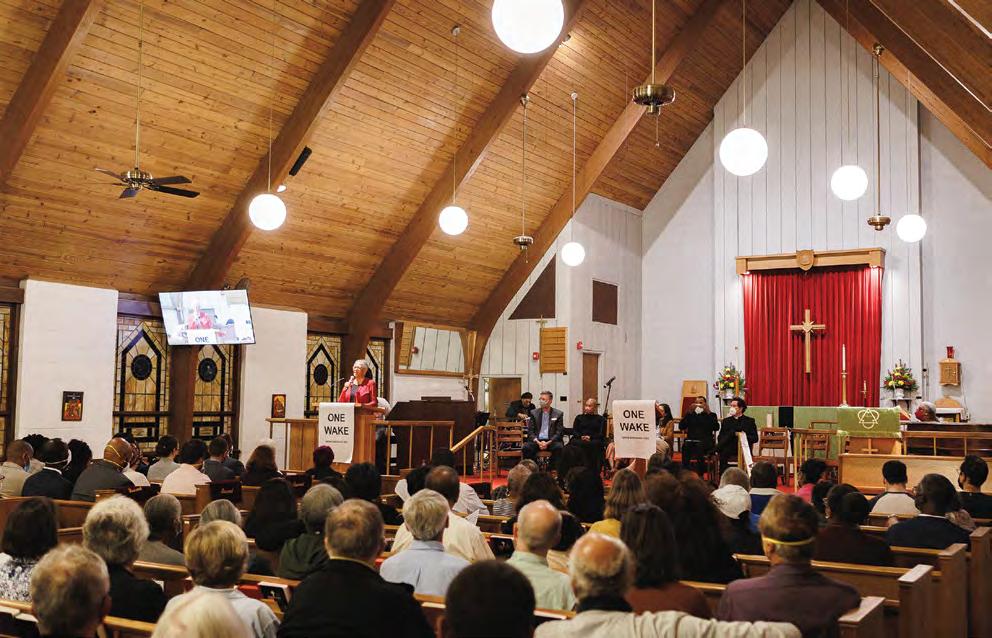
From the INDY’s reporting in the last year, Tina Love-Hin ton, a mother of five, spent eight months looking for her first home, outbid again and again by out-of-state trans plants willing to put down $30,000 or $40,000 in cash. Francisco Ceron-Sagastume, a renter near Dix Park, was forced out of his home after it was sold to a developer planning to build a high-end apartment complex.
Stories like these aren’t unusual in Raleigh nowadays, and they speak to a common theme: a shortage of homes that middle-class workers can afford to rent or buy.
Baldwin argues the solution to Raleigh’s housing crisis is reforming zoning rules to allow more houses to be built, meeting increased demand. In some ways, that strategy has worked. Since last year, the number of homes for sale in Wake County has doubled, going from 1,234 in August of 2020 to 2,562 in August of this year, according to Triangle MLS, a website that tracks home listings and other market trends.
The number of months it would take for Raleigh to
sell out of homes has also increased, from about two weeks to six weeks.
Baldwin touts the city’s $80 million housing bond. The city is now on track to build 5,700 affordable housing units by 2026. The running total is currently 3,910, and the bond is also helping fund a homebuyer assistance program and a home repair program.
“We have probably done more on housing affordabili ty than any council has done in the past,” Baldwin says. “We now allow for the construction of [accessory dwell ing units]. We got rid of exclusionary zoning and we now allow missing middle housing, which gives people more of a choice in homes. The partnership with Campbell Law to prevent evictions, that’s never been done before. We’ve really stepped it up in terms of looking at housing afford ability and choice.”
“Raleigh is growing,” Baldwin continues. “We’re the third-fastest-growing city in the country. And I know there are people who want to stop growth, but we can’t stop growth. We have to plan for it.”
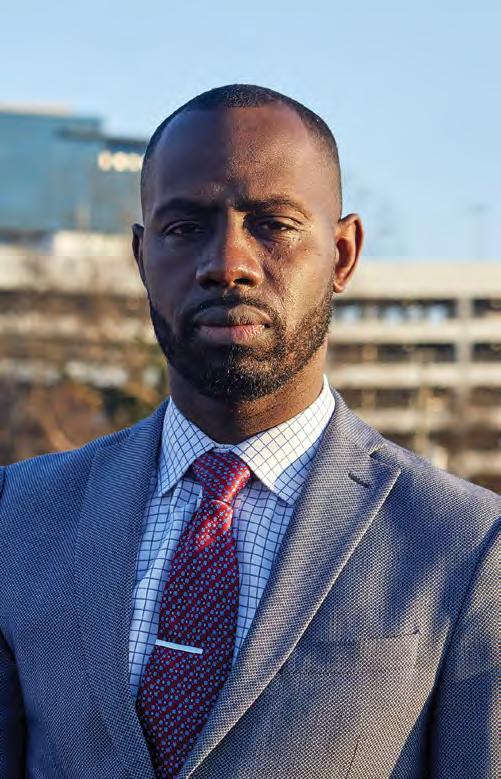
Baldwin’s critics—namely the neighborhood advo cacy group Livable Raleigh—argue her develop ment-friendly agenda hasn’t created more afford able housing, just more unaffordable “luxury” apart
ments and skyscrapers. Livable Raleigh and other com munity groups also accuse Baldwin of being in the pocket of developers.
During her first year in office, Baldwin went to work as the director of business development for Barnhill Contract ing, one of the largest builders in the Triangle, drawing criticism until she resigned a little over a year later. Before that, Baldwin worked for Holt Brothers Construction and as executive director of the company’s foundation. Cur rently she is the vice president of a nonprofit that helps children learn skills through golf.
Some of Baldwin’s top donors are executives of contract ing and real estate development companies, but she has denied any connection between campaign contributions and policy decisions. Baldwin has also received $5,600 from the NC Homebuilders Association PAC, a political action committee advocating for “pro-housing candidates,” according to its website.

The city has made a strong effort to build more affordable housing but hasn’t been able to keep up with escalating demand. Despite Baldwin’s efforts, housing prices continue to soar and much of Raleigh’s existing affordable housing has disappeared. Even as the city builds thousands of new homes, nearly 9,000 affordable apartments
have been lost since 2019. This year, Raleigh had a deficit of nearly 20,000 affordable apartments, according to a report by United Way of the National Capital Area.
In some ways, Ruth’s approach to housing is similar to Baldwin’s. Like the incumbent mayor, he says he supports buying land for future affordable housing projects by the city, arguing the city can’t control rent prices unless it controls the land. He supports investing more money in permanent supportive housing for the homeless and other vulnerable populations.
But he also wants the city to be more aggressive in controlling where and what developers build. Ruth says he wants to create affordable housing overlay districts, which provide additional incentives to developers to build affordable housing in certain areas.
“Affordable housing overlay is critical, especially in areas where there’s high demand, high interest, [like where there’s] Bus Rapid Transit,” Ruth says. “New Bern and Method are two historically Black communities. How do we demonstrate that the council is representing those voters?”
Ruth also thinks the city should follow Wake County’s lead in creating an affordable housing department and use a new tracking system to see what existing housing may be going on the market. Finally, he wants to work more closely with developers and landlords who are willing to take on affordable housing projects, creating a database or pipeline to draw on.
“Community engagement” isn’t just a buzz-phrase in this year’s election; it’s a central issue. Ever since the Raleigh City Council voted 6-2 to defund CACs—neigh borhood groups that met monthly to discuss commu nity issues, but also a format residents used to oppose new development projects—in 2020, many Raleighites say they have felt ignored.
For the last two years, the most direct way to commu nicate with city council members has been through public comment at council meetings, which comes with strict rules and a one- to three-minute time limit on speaking. The city council disbanded CACs, it appeared, but didn’t seem in a rush to replace them with a new system of public outreach.
After a year of inaction—also the year of the COVID pandemic—the city created the Office of Community Engagement in 2021, led by manager Tiesha Hinton. This year, the community engagement board has started meet ing, and communication between the city government and residents seems to be improving. The city council recent ly added an option to leave public comments via voice mail, addressing concerns about people unable to attend meetings in person.
But the limited means of engaging with the city coun cil since 2020 have fostered feelings of distrust among residents. Many continue to assert that their voices aren’t being heard, and candidates are making community out reach a central campaign issue. Ruth is leading the charge.
“Right now, as I’m going around the city, it feels like the weight of engagement is on the voter,” he says. “If the voter doesn’t attend the [city council] meeting, they’re unheard and unseen. That weight should be on the council and the mayor.”
Ruth says engagement for the past few years has been primarily meeting-based. He wants to expand outreach to meet peo ple in their communities. City staff should attend neighborhood gatherings and work with community leaders, he says. Staff should reach out to residents online and know whom to call if they need to hear the concerns of people in a particular area.
Some city council candidates take a stron ger stance, saying CACs should be refund ed. Mary Black, running in District A for the seat currently held by Patrick Buffkin, who declined to run again, says CACs, some of which are still operating, need to be heard by the city council.
“You don’t get rid of an almost 50-year institution because there are some flaws in the way things work,” she says. “Not hav ing that engagement is going to increase the issues that we’ve already had here with unaffordability and overdevelopment in ways that don’t work for the communi ties here and the people who live in them.”
According to Baldwin, however, CACs are a thing of the past.
“In one survey we did, 90 percent of peo ple in Raleigh had never heard of a CAC or attended a CAC. So it really was not an effective way of doing outreach,” Bald win says. She added that the city coun cil made several attempts to reform CACs before defunding them, saying, “We had two studies done on how we could enhance the CACs and we got very strong pushback both times from the CACs.”
“Our decision to no longer fund the CACs was made because we believed we could do something better, and that’s the path we’re on right now,” Baldwin continued. “Obvious ly COVID got in our way, but what we’re looking at right now is more outreach in the community.”
Baldwin went on to describe a kind of place-based outreach that matches Ruth’s philosophy of “meeting people where they are.” Hinton has plans for mobile “commu nity engagement” vehicles that will go into neighborhoods, according to the mayor. The vehicles will come equipped with com puters and city staff to spread awareness about the activities of local government and get input from people.
“The other thing we’re talking about is literally door-to-door communication, door knocking, going where people live and the places they frequent,” Baldwin says. “So having meetings in dog parks, communi ty centers, senior centers. It’s really about getting out and engaging in a personal way. And that’s what Tiesha [Hinton] is passionate about.”
Ultimately, most candidates running for office say they want the same things when it comes to community engage ment—comprehensive outreach programs that don’t put additional burdens on residents and ensure the voices of minori
cy move, it gave city council incumbents a bonus year in office, an outcome that out raged some citizens. Likewise, allowing can didates to win future elections by plurality rather than majority may be more efficient, but it gives incumbents an edge, critics say.
The nonpartisan good government advocacy nonprofit Democracy North Carolina (along with some local state law makers and Governor Roy Cooper) took issue with the move.
“Democracy North Carolina took an official opposition to [SB 722] because of that permanent change to how Raleigh was going to elect its local officials,” says Joselle
and safety right now. We don’t need to wait for another George Floyd; we need to reconcile the concerns of 2020, which we have not done.”
Following the protests in 2020, the city did replace its police chief. The for mer police chief, Cassandra Deck-Brown (who was in charge when police officers and sheriff’s deputies fired tear gas and nonlethal ammunition into crowds of pro testers) retired last year to make way for Estella Patterson. The former city man ager, Ruffin Hall, resigned at the end of 2020 following the protests as well.
Ruth and Baldwin agree that Patterson is passionate about community outreach.
“She’s everywhere,” Ruth says.
“One thing I love about Chief [Patter son] is that she is great with communi ty relations and building trust,” Baldwin says. “She is out there, and I think that has helped make a difference. [October 5] was National Coffee with a Cop Day, so we had our officers out at six locations meeting with the community. [Patterson] was at the McDonald’s on Poole Road, and she said it was packed.”
The city council has also expanded the ACORNS unit, a group of police officers and social workers who respond to mental health crises, Baldwin says. The council is also working with the NAACP and Moms Demand Action to reduce gun violence.
ty populations are heard. But the unceremonious demise of CACs and frustration with how long it has taken to take even the smallest steps forward has resulted in disagreements on the best ways to achieve community engagement.
When it comes to building trust in the political process, the council has made its share of missteps, too. In the past three years, the council disbanded the CACs with out notice, moved a city election in a closeddoor meeting, and voted through new city districts opposed by local community groups based on U.S. census data.
The bill with election changes, Senate Bill 722, was passed by the state legislature last June. And while rescheduling the election to an even-numbered year to coincide with a midterm wasn’t necessarily a bad poli
Torres, the communications manager for the nonprofit. “[They] basically gave them selves 12 more months in office without any public comment, without appropriate public notice either.”
When George Floyd was killed by Min neapolis police in 2020, Raleigh residents took to the streets for days to protest police violence and call for reform. Two years later, however, not much has changed.
“We never had a conversation about community and policing in our city,” Ruth says. “We never reconciled that at all, we just moved forward. We need to build coalition and conversation about community
But Black Lives Matter activists remain frustrated with the city council’s over all policing policies, as well as the police department’s nearly $8 million budget increase over the last fiscal year. A cam paign earlier this year by community group Refund Raleigh to divest from the police force and invest in social services and nonpolice response units was essentially ignored by the city council.
And police violence hasn’t slowed. In the last two years, Raleigh police have shot and killed five people. Refund Raleigh is asking this year’s city council candidates to vote against a 2023 budget that increases police spending and is working with the Wake County Sheriff’s Office to cut ties with U.S. Immigrations and Customs Enforcement.
“The police cannot be a container for the things we need in order for our com munities to thrive,” says local social justice activist Ajamu Dillahunt. “The de-escala tion that has supposedly been attempt ed is just not adequate. The institution is deeply flawed and has a history of racist and brutalizing tactics.”

Mary-Ann Baldwin (incumbent) maryannforraleigh.com
DaQuanta Copeland
N/A
Terrance Ruth truth4raleigh.com
James Bledsoe electjamesbledsoe.com
Josh Bradley bradleyforraleighworkers.com
Stormie Forte (incumbent, District D) stormie4raleigh.com
Anne Franklin annefranklinforraleigh.com
Jonathan Melton (incumbent) jonathanmelton.com
John Odom
N/A



Portia Rochelle rochelleforraleigh.com



Mary Black
mary4districta.com
Whitney Hill whitneyforraleigh.org
Catherine Lawson catlawson.com







Minu Lee leeforraleigh.com
Jakob Lorberblatt jakobforraleigh.com
Meghan Patton pattonforraleigh.com
Frank Pierce pierce4nc.com
Corey Branch (incumbent) coreybranch.com
Frank Fields frankfieldsfordistrictc.com
Wanda Hunter wanda4raleigh.com


Robert Baumgart
robraleigh.com
Jane Harrison janeforraleigh.com
Todd Kennedy kennedyforraleigh.com
Jennifer Truman jennifertruman.com
Christina Jones
christinaforraleigh.com
David Knight (incumbent) knightforraleigh.com

Photographer Avery Danziger has taken pictures of phenomenons all over the world. For fifty years, the magic of the NC State Fair has stayed a favorite subject.
BY SARAH EDWARDS sedwards@indyweek.comThere is no shortage of interesting things to see at the North Carolina State Fair, but as anyone who’s ever been knows, people-watching is half the fun. Active in Raleigh in various forms since 1853, it’s an event that draws attendees from all corners of the state, showcasing everything from large vegetable phenome na and hair-raising rides to rattlesnake corn dogs (see page 15), allowing us all to share, as the photographer Avery Danziger says, the “mundane, wonderful stuff that makes up our lives.”
Danziger should know: since 1972, he’s been visiting the fair off and on to try and capture its magic. To commemorate that 50-year mark, Danziger’s A Fair of the Heart: NC State Photographs, 1972-2022 which include both film in black-and-white and color—will be exhibited at downtown Durham’s Through This Lens Gallery begin ning October 21 and running until Novem ber 12. The event is a part of the CLICK! Photography Festival, the monthlong cele bration of photography that plays host to more than 85 events in 45 venues across the Triangle.
Danziger grew up in Chapel Hill and has had work shown by the Mint Muse um in Charlotte, the Museum of Modern Art in New York City, and the Smithso nian American Art Museum in Washing ton, DC. Despite this sprawling reputation, though, the state fair has always drawn him back. His photos—of a couple shyly hold ing stuffed sharks, a boy coyly standing in front of a pig print, a woman pausing to eat below a “Guess the Weight” sign—tell a story, not just about the state fair but about North Carolina itself. Most photo
graphic series over time track change; in a comforting way, though, these photos show just how much has stayed the same.
Danziger lives in Chapel Hill, where, he says, he serves as a “caretaker” for a one-bedroom house with a pool that served as the setting for the Natalie Wood’s final movie, Brainstorm. Recently, I met him in the backyard of Durham’s Accordion Club to learn more about his work. This interview has been edited and condensed for clarity.
INDY Week: When was the first time you went to the NC State Fair?

AVERY DANZIGER: The first time I went to the state fair was when I was probably six or seven years old with my parents—that would have been around 1960 or so. We would go every other year and it was a rare occasion for all the kids to be together, and it was a strange thing we did in almost a religious way for at least three or four years. After that, I would go with one of their friends or employees.
And as soon as I started taking photo graphs, I would return. That started around 1972, and I would go back every few years and take photographs. I left North Caroli na when I was 18 and returned five years ago, and since I’ve come back, I’ve contin ued to go.
And what did you see?
It’s always been fascinating. As a child that can easily escape from their parents, I would do that as soon as I could—and in those days, at least with my parents—they didn’t look for you. They just assumed you’d
come back, and usually there was some kind of odd prearranged place that you’re supposed to meander around.
I was always attracted to the sideshows. That to me was fascinating—the three-head ed woman or the bear-headed snake, or whatever it was; it still exists today. Miracle things, not so much the womp-games and things that came in later—shooting con tests, that kind of thing.
What kept you going back, and not just going back but going back and taking pictures?
Several themes are a part of my pho tography. I love to take pictures of things that people have already taken tons and tons of pictures of—that, to me, is incred ibly exciting. Take the most hackneyed thing—dogs, girlfriends, buildings, plants, doesn’t matter—and try and find what was the original essence that made people so attracted to take the photograph in the first place, what power they had, and then try to stir that up.
There’s so much of the insignificant that’s extraordinary when you examine it. One of my series, you may have seen it, was of the interior of an abandoned psychiatric facility called Harlem Valley. It was exciting to me because I made, I don’t know how to put it, portraits of walls. I subtracted something that I thought was beautiful out of chaos.
It’s a marvelous microcosm of the state. It’s the coolest thing I’ve seen that rep resents the state. The whole public is, is looking at things that are normally divided up in our society, and they get to see a little window into it—everything from, you know, the Christian churches with their Christ up front and, you know, how to milk a cow or a pumpkin the size of a small house. It’s an extraordinary thing that brings all of those people together.
They seem to abandon whatever politi cal concerns they have for their fellow man and actually go there and enjoy themselves and eat funnel cake and do all this kind of mundane, wonderful stuff that makes up our lives. For a lot of people it’s a real break for them from whatever it is they do nor mally, and it’s a reconnection with a whole different type of festive spirit that during COVID had disappeared. I’m looking for ward to going back this weekend.
When I’ve shown [my photos] at the state fair—and I’ve shown at other state fairs—I love it because it’s the largest venue I’ll ever have to show my work, like 50,000 people. Some people scoff at the idea of showing at a state fair, but I don’t. I think it’s a great opportunity to get your work seen by a lot of people who would not normally walk in a gallery or museum. And to me, that’s what photography is about. W

There are 40 new dishes at the NC State Fair this year— most of which look like they came straight out of a Chopped episode—so be sure to save some room for new traditions in between your Krispy Kreme cheeseburgers and grist mill hush puppies.
The fair runs October 13-23. Here are five of our picks for the most innovative new menu items.
A twist on a state fair classic, this dish is best described as a Thanksgiving leftovers sandwich turned inside out, with a hollowed-out smoked turkey leg—instead of the typical stale bread roll—acting as a vehicle for stuffing, gravy, and cranberry sauce.
I really like this idea; putting stuffing between slices of bread has always seemed superfluous, and turkey is such dry meat that it makes more sense as a husk than a filling. Optional additional fillings include candied yams, collards, and mac ’n’ cheese.
Rattlesnake meat is exceedingly bland—in the Southwest, it’s often called “desert whitefish”—so the quality of this serpenton-a-stick will be governed by its seasoning. If the spice is right, this dish could be a menu highlight; if it lacks flavor, it will still come with the bonus of making you feel like Bear Grylls without having to drink your own pee.
Our governor self-identifies as a “diet soda sommelier” and loves Keurig Dr Pepper’s diet Sun Drop, but North Carolina remains a Pepsi stronghold. (If you’ve worked at a North Carolina restaurant that doesn’t serve Pepsi, you know this better than anyone.) With a Pepsi-infused glaze and a crunchy peanut topping, these donuts are a spectacular showcase of our state’s food and drink culture.


Roasted corn is another state fair classic, and this dish— de-cobbed Mexican street corn with crema, cotija cheese, hot sauce, and a squeeze of lime, served in a bag of crushed Doritos—offers an enticing enhancement. It’s the best thing to happen to North Carolina Doritos lovers since 2006, when a beached cargo container spilled thousands of bags of Doritos onto the shores of Hatteras Island.

In August, The News & Observer reported the sad news that the state fair’s venerated country ham biscuit booth, operated by two Cary churches for more than a century, will not be returning to the fair this year. To soften the blow, head to the Ragin’ Cajun booth for a new iteration of the beloved staple: deep-fried slices of local country ham served with a sweetand-smoky peach bourbon jam. W
On a Friday Salsa Social night at Durham’s Arthur Murray Dance Studio, rhythm is in the air.
BY CHASE PELLEGRINI DU PAUR arts@indyweek.comI
t is the first Friday of the month at Durham’s Arthur Murray Dance Stu dio—Salsa Social night—and couples are twirling and prancing to the beat on the main dance floor. But around the corner, away from the group, Liza Salmon dances alone, barefoot. Salsa dancing isn’t hard, says Salmon, a baker by day and aspiring dancer by night. She says the key is to “let the music flow inside of you.”
The spicy dancing in the Arthur Mur ray studio seems a bit out of place in this neighborhood of warehouses and garag es that have been converted to bars and restaurants. Across from the studio, crowds of college kids stream into (and stumble out of) Boxcar Bar + Arcade for the weekly “Fireball Friday” deal, looking to drown their sorrows in cinnamon shots. Something, though, has convinced the salsa crowd to forgo the bars and spend a weekend night learning the tango and bachata.
Arthur Murray, traditionally focused on ballroom dance, might invoke imag es of lonely old ladies looking to recap ture their youth. Tonight’s dancers, however, are diverse in age and gender. Many of them are professional workers in their 30s. Of the roughly two dozen peo ple in the room, most are white of skin (although two are purple of hair), with a few people of color sprinkled through out. Some are here on dates, others came
alone. Salmon brought a male friend in hopes of dragging him out of his comfort zone. For now, he stands at the refreshment table by himself.
The monthly Salsa Social is open to any one who pays the $10 cover. The partici pants get in the spirit with flowery shirts and dancing heels for an hour-long group lesson followed by unstructured dancing until midnight.

Maria Espinosa Spencer strides around the room in a black high-low dress, play ing host to newcomers and returning dance students with chips and boxed wine. Maria and Joel Spencer, Maria’s partner in business, marriage, and dance, opened the studio about a year and a half ago while Durham was still reeling from the COVID pandemic.
Maria and Joel have been with Arthur Murray for 18 and 14 years, respectively. After her introduction to the chain as a student in Kentucky, Maria got hired as an instructor and trained in Chicago before settling in Durham to be closer to her fam ily. As the only instructors at the studio, they sometimes wish they could find anoth er set of hands. “Most dance studios are small businesses. It’s hard to compete with places that can afford health insurance.” Arthur Murray claims to be one of the old est franchises in America. According to the company website, Arthur was a famous
instructor and dancer in the early 1900s. After his retirement in the ’60s, the modern company’s franchise model took hold, with studios opening in places such as Dubai, Taipei, and Tokyo.
Lessons cover “anything that you can do with a partner,” Maria says with a smile. While tonight is about salsa, the Durham studio offers at least a dozen types of lessons. “We specialize in weddings, all of the swing danc es, all of the Latin dances, all of the country dances, all of the ballroom dances.”
Maria says the studio’s downtown loca tion helps business. “People come in some times and just inquire about what’s going on here, especially with the loud music.”
Since the pandemic, Maria has noticed her clientele getting younger. “COVID put a hold on so many weddings, and now every one’s trying to get married.” Couples take a few lessons to impress their guests with that perfect first dance. Maria and Joel teach as many as 15 lessons a day and are looking to build a back porch on the stu dio to help people feel comfortable in close proximity with strangers and their germs.
At first the only sound is Joel’s loud counting as he walks his students through the basic steps of salsa. He takes command of the studio and leads by example, striding around the room on slender legs.
“Let’s pick up one foot—it doesn’t matter which one—and then put it back down—and then pick up the other foot and come back down.” In a matter of seconds, Joel has his students marching in place.
“And that’s the whole dance!” he jokes. There’s an unspoken commitment from Joel to his students: Give me your feet and I will make you the sexiest person on the dance floor! I will make you the star you’ve always known you are! I will make you a salsa dancer!
Seated on the side of the dance floor, Anne and Joe Reese patiently await their cue. They are probably the most senior and experienced couple in the room. They smile politely, careful not to judge the newcomers too harshly.
T
o kick off the lesson, Joel Spencer, dressed in black, sweeps onto the floor. The lights of the studio glint off his earrings and his “S” (for Superman) belt buckle as he claps his hands and shouts, “Let’s dance!
Come on!”
The Spencers and the Reeses are so good they compete in regional and nation al Arthur Murray events. Loud posters for these line the walls of the Durham stu dio, highlighting events such as Char lotte’s “21st Annual Southern Summer Showcase” and Virginia Beach’s “Beach Blanket Bingo—The BEACH PARTY gang goes DANCING!!!”
Joel teaches one sequence of the salsa dance, then commands the students to
feature
rotate to a new partner. “Introduce your selves if you haven’t already!” he says before immediately making that impossible by launching into a rapid-fire explanation of the next step.
As the lesson continues, DJ and dance aficionado Jack Wolf strolls into the stu dio. The colored lights illuminate his white fedora. There is an air of wisdom about him, with white hair flowing out beneath his hat.
“I know everything about the salsa scene,” he says matter of factly, conjuring a white business card with the deftness of a magi cian finding a quarter behind an ear. He says his website “lists every dance in the Trian gle of every kind.” At one point, he stops mid-sentence and jogs away to hit play on “Betece,” a song that Wikipedia describes as part of a project to “unite New York–based salsa musicians with Senegalese vocalists.”
“It’s the music that moves you—that’s why I love salsa!” Wolf says.
A dancer at heart, Wolf can’t resist the pull of his own playlists. He leaves the DJ stand and clutches his partner close. This is not his first dance of the week, and it won’t be his last.
“You can find a dance every night of the week except Monday.”


B
y the end of the lesson, Joel has torn down any remaining social barriers. How could you be nervous to speak to someone after practicing your under-arm single spin togeth er? How could you feel alone while a man named Wolf queues up dozens of dance hits?
The night is coming to a close. Salmon’s friend has been dragged to the floor several times by eager partners. Salmon has been dispensing her “feel the music” philosophy to anyone who will listen.
Anne and Joe Reese watch attentively for a few songs until Wolf puts on a Cuban chacha. The Reeses, finally hearing the beat they’ve been waiting for, rise to their feet and glide to a corner of the floor. “This is their jam,” says one of the regulars.
They orbit each other with straight spines and steps rehearsed in the two decades since they met at an Arthur Murray in 2001. Having danced their way across the country, they are now the undisputed royalty of the Durham studio.
Just as Maria predicted, a man drawn by Wolf’s music wanders into the studio and pays the $10 cover.
As Anne Reese says, “Dancers always come together.” W
To advertise
feature
pet for adoption,
This story was published through a partner ship between the INDY and The 9th Street Journal, which is produced by journalism stu dents at Duke University’s DeWitt Wallace Center for Media & Democracy.
A collection of never-exhibited Vivian Maier vintage prints find a home in Durham. They offer new ways of seeing the world—and the mysterious street photographer behind them.
 BY SARAH EDWARDS sedwards@indyweek.com
BY SARAH EDWARDS sedwards@indyweek.com
mystery until 2009, when Maloof Googled a name scrib bled on an envelope: Vivian Maier.
The search pulled up a Chicago Tribune obituary, posted just days before, for a beloved nanny and “photographer extraordinaire.” She had died earlier that week.
That kind of sliding-door moment is a constant in Mai er’s story, though it doesn’t define it. Born in 1926, Maier spent her childhood moving between New York City and rural France, where her mother was born. Her adult years took her to New York City, where she worked at a sweat shop, and then to Chicago, where she worked for decades as a nanny. The shape of Maier’s life was one spent on the fringes and this was largely, as far as we know, by choice. She was fiercely independent, describing herself as a kind of “spy” to friends, seeking out bolted doors in the rooms she lived in, and using aliases when she went to get rolls of film developed.
“With the film she was using, there were 12 pictures on a strip,” says Christine Benoodt, the collection manager for Goldstein’s Vivian Maier vintage print collection. “When she was approaching her prime, the people who developed her negatives and prints look at her contact sheets for a strip of 12 and say that she had gallery-level images at a hit of one in three or one in four. That’s almost like a savant level.”
Maier also liked using herself as a subject in photos, appearing with cropped hair and a determined gaze at surprising angles, and sometimes only as a shadow: in the picture but on her own terms. If Maloof had managed to contact her while she was still alive, it’s hard to know how she might have responded,
Her work is celebrated at CLICK! Festival this weekend, with a two-day showcase at the Fruit that includes the exhibit of Goldstein’s collection, a screening of the docu mentary The Vivian Maier Mystery, a keynote presentation, and a roundtable discussion with the printers who took painstaking care to bring some of her negatives to life.
T
he story of how the Durham artist and collector Jeff Goldstein came to own several thousand vintage Vivian Maier prints begins, as Goldstein tells it, with “everything from bedbugs to guns.”
Goldstein teases this story on a call from TROSA Thrift Store on North Roxboro Street, one recent Friday afternoon. He’s there collecting items to fashion onto a multi-mirrored selfie booth that he built for Seeing through Vivian Maier’s Eyes: The Vivian Maier Research Project, a two-day showcase that’s part of the sprawling, monthlong Triangle CLICK! Photography Festival.
These vintage prints, which were developed during Mai er’s lifetime, have never been shown to the public before.
Later, once he sits down and tells the whole thing,
Goldstein’s story lives up to its teaser. But there are so many stories, and scaffolds, to the legendary photog rapher Vivian Maier’s mythology—a midwestern hall of mirrors reflecting a hundred different stories about art, imagination, privacy, power, and identity—that it’s best to begin with a few basic structural levels.
In 2007, a young auction hunter named John Maloof plunked down $400 for a hefty box of negatives that had been repossessed from a Chicago storage locker previously owned by an ailing elderly woman. As he began to scan the 30,000 images in the box, he grew impressed by their artful, exacting scenes of street life, and he hunted down and purchased other boxes of negatives from the locker. The photographer behind the images, though, remained a
The festival offers an exceptionally rare chance not just to see her photographs—which have been the subject of heated estate battles for years that have put them behind red tape—but to see works from Goldstein’s private col lection that skew from the Chicago street life photos that most people are familiar with, and broaden what we know of Maier’s life and vision.
Included in the exhibition is the first photo she ever took while visiting her childhood home in France, as well as pho tos of the celebrities she surreptitiously photographed and the crime scenes she haunted.
“There are so many flashes in the pan with artists,” Gold stein says of the attention that Maier’s photos began to attract after the discovery was made. “I was waiting for it to stop. And then it just kept going and going.”
A
nother scaffold in the posthumous story of Mai er’s life: the people who discovered her work—John Maloof and Goldstein, among a few others—and made it their mission to share it with the world.
Mostly these people were men, which makes for a complicated pairing. As recounted in documentaries and biogra phies by people that knew her, Maier was wary of men. She’d made her own way in life and was fearless, taking the children she nannied all over town and venturing out on her own to the seedier areas, her camera leveled at its usual spot at her chest.
Some scholarship about Maier, including a 2017 biography by Pamela Bannos, is also wary of the men who purchased her pho tos, suggesting that Maier would have been resistant to her contemporary portrayal.
Several weeks ago at the Durham Farm ers Market, Christine Benoodt and Gold stein set up the selfie booth they’d built—an homage to Maier’s predilection for self-por trait—alongside information about the fes tival and Maier’s work.
According to Ben oodt, one woman paused by the booth. Benoodt asked if she’d heard of Maier.
“Yes,” Benoodt recalls the woman say ing, “she’s overrated. And men have taken control of her work.”
Goldstein’s part in the story began a decade ago, when he lent money to a friend who was fleeing a bed bug infestation. At the time, Goldstein was an artist in Chicago, and no stranger to the city’s famous out sider artist scene—he recounts selling dis counted paper to the eccentric artist Lee Godie—and had heard murmurs of the tal ent in the boxes of Maier negatives. When the friend he’d lent money to offered to pay him back in 57 Maier prints instead of cash, he reluctantly agreed. An obses sion was born. Goldstein now owns the largest collection of vintage Maier prints in private hands.
“If there was dust or hair [on the photos] that we couldn’t easily blow off, we left it there, because we didn’t want to damage it,” Goldstein says, over coffee at Triangle Cof fee House. “It’s like archaeology. We were very, very careful with the material.”
Goldstein, who moved to Durham in 2016, is a fourth-generation carpenter and cabinet maker. He has something of a cow boy carriage—when we meet, he’s wearing a worn pink T-shirt and sports a gray soul patch—but he grows earnest and technical when describing the particulars of Maier’s work and how he has cared for it.

The guns part of the story comes when Goldstein bought the third batch of pho
tos from the collector Randy Prow. By this point, interest in Maier had reached some what of a mania and the photos’ value had gone up. For the transaction, the two met in a hotel conference room off the high way. Goldstein brought a friend with a gun as protection.
“When you’re carrying $140,000 …” Beno odt trails off. “Well, that’s just a lot of money.”
While it’s a little jarring to hear Mai er’s work spoken about in the context of such red-blooded moments, in some ways, it makes sense. She may have flown under the radar, but she didn’t seem afraid of it.
I was first introduced to Maier’s work around 2012, when it began to trickle into the mainstream, through Tumblr—a perfect platform for her photography to take flight (and in fact, it’s fair to wonder if her work would ever have taken off without the internet).
I was drawn to the way Maier’s photos tell long stories in nanosecond shots. Like another female midcentury artist, the author Grace Paley, they have the quality of a frag ment captured just as the hammer comes down: you can picture Maier captur ing, for instance, the quiet moment of emotion in a story like Paley’s “Wants,” which begins “I saw my ex-husband in the street.
I was sitting on the steps of the new library.
Hello, my life, I said.”
Her work is often compared to renowned street photographers like Garry Winogrand or Robert Frank, though they stylistically differ: while Frank’s portraits were intentionally muddy and grainy, like the trail of a finger across a windowpane, Maier’s are crisp, minimalist, and well-salted with emotional detail.
The fever pitch around Maier’s work has quieted down, in part because of ongoing tugs-of-war around copyright. The mystery of her life, too, has often overshadowed actual access to it, and she’s never gotten the big retrospective treatment many other artists have—perhaps because of a pervading public belief that the way she was discovered means she is “overrated.”
The opportunity to see Maier’s work here, in person—and not in a big city or at a big festival—is a rare one. It may shape the way you, too, see the world.
“We’re here,” Goldstein says. “This is our new home and we’re using this as a passport to integrate ourselves into the art community and to give something back to the community.” W

“There are so many flashes in the pan with artists. I was waiting for it to stop. And then it just kept going and going.”
From All the Way to Richard III: Reviews of four significant local productions, this October.
BY BYRON WOODS arts@indyweek.comThe impatience of young activists Stokely Carmichael (Daniel Cryer-Muthedath Ryder) and Bob Moses (Akili Holder-Cozart) manifests in growing arguments with NAACP leaders including King (sonorous Preston Camp bell) and Roy Wilkins (robust Juan Isler).
Their direct action in the subsequent Mississippi Free dom Summer project, whose efforts to register Blacks to vote resulted in 35 burned churches and three activists’ deaths, is depicted in an electrifying funeral scene. The split among the leaders is made plain when Congress of Racial Equity leader David Dennis (Holder-Cozart) inter rupts King’s eulogy with a call for action: “If you go back home and sit down and take what these white men in Mis sissippi are doing to us … and don’t do something about it—then God damn your souls! STAND UP!”
It is deeply jarring when Johnson seeks a modulated level of federal intervention in Mississippi afterward—one that doesn’t provoke open revolt among Southern politicians, weeks before the Democratic National Convention where he’s running to be his party’s candidate for president. It also reflects a conventional—and disturbing—political reality: it’s hard to effect change as a politician if you can’t get elected.
History shows that Johnson got the Voting Rights Act passed in August 1965, less than a year after being elect ed. In a theatrical version of a cinematic split screen, Shen kkan underlines the similarities in Dr. King’s acceptance speech for the Nobel Peace Prize and a speech in New Orleans where Johnson made plain his stand on civil rights: “Whatever your views are, we have a constitution … [and] a new law of the land. A civil rights law. And you can vote for me or vote against me but I signed it, and by God, I am going to enforce it.”

Still, Schenkkan’s script and Sipp’s performance don’t smooth most of the rough edges of a leader who was large ly unapologetic for the road he took.
I
n a November 1963 conversation with Martin Luther King Jr., the activist Stanley Levison described Lyndon B. Johnson as “a Southern politician who’s spent his entire life trying to be president …. For the first time he can do whatever he wants.”
But All the Way, playwright Robert Schenkkan’s gritty, panoramic drama about Johnson’s first year as president, underscores how wrong Levison was. The brisk and occa sionally breathtaking production at the Justice Theater Project reminds us of the few moves available to Johnson in his delicate, high-stakes dance across the minefield of issues that threatened to rip America apart after the assas sination of John F. Kennedy.
In retrospect, it’s amazing that this brusque, earthy leg islator nimbly threaded among civil rights leaders, segre gationist Southerners, senators, liberal legislators, and the press, not only keeping the fabric of American society from unraveling but enacting profound social change with the landmark Civil Rights Act of 1964.
Under Brook North’s direction, artistic director Jerry Sipp’s riveting, supersized performance as Johnson cap tures the contradictory facets of his personality. We see an idealist devoted to realizing the Kennedy administration’s loftiest goals (which Johnson would extend in his own Great Society initiatives) and dismantling a racism deeply entrenched in Southern culture and politics.
We also see a manipulative, ruthless politician adept at the “Texas Twist”—the coarse and callous realpolitik of cut-throat governance at the highest level. Before observ ing that “there’s no place for nice in a knife fight,” John son notes, “Politics is war, period …. You’re not running for office; you’re running for your life.”
As Johnson stands toe-to-toe with 1960s icons including partisan FBI director J. Edgar Hoover (Dan Oliver) and future vice president Hubert Humphrey (Alex DeVirgilis), we also witness, through the FBI’s covert bugging of social activists, the divisions that challenged the civil rights movement.
He acknowledges the quantum imperfections, horse trading, arm twisting, and backroom deals that are a part of the political process when he knowingly asks the audience in a closing monologue, “Did it make you feel a little squeamish? Did you have to look away some times?” Then he pauses, before concluding, “This is how new things are born.”
Burning Coal Theatre | Through Oct. 16 | burningcoal.org
It’s best to know whom you’re traveling with before head ing into the Alaskan outback. In the suspenseful world pre miere of British playwright Tatty Hennessy’s tautly written drama, the wilderness experience destabilizes relationships among a superbly directed and acted quartet. First, free spirit Leah (A.C. Donohue), an environmental activist on a third date with Justin (Matt Hager), a rich Silicon Valley
tech developer, learns that Jim, the opinion ated father of their trail guide, Chris, is a longtime oil rigger on the Alaskan pipeline. Then we learn Justin’s been hiding some thing, about the time Jim (impressive Gene Cordon) really starts losing patience with Chris (Ben Apple). As jealousy, economic desperation, and differences in class and age further alienate the characters from each other, we learn that 60 miles away from civilization is no place to renegotiate a relationship, much less rewrite the social contract. Still, the abrupt ending made us feel we’d only seen the first two acts of a three-act play.
Sweet Tea Shakespeare | Leggett Theatre, William Peace University | Through Oct. 16 | sweetteashakespeare.com
Believe it or not, a sociopath can rise to the highest peak of power in a country: all it takes is money, connections, and a willingness to lie and manipulate people’s deep-seated prejudices and fears. In the title role, David Henderson’s deeply dimen sional Richard repeatedly breaks the fourth wall to convey to us his cunning as he gulls the credulous, including Michael Foley’s Clarence. Director Wade Newhouse sees in the widowed Queen Elizabeth not a woman fooled by Richard’s power-motivated woo ing but one with no allies or protection after her husband’s death. Designer Denise Schumaker’s intriguing costumes outfit an ensemble featuring strong performances by Aaron Alderman as the shady Buckingham, Ris Harp’s murderer, and Shaun Schneider’s Richmond. But when the cast started walk ing out through Richard’s last soliloquy, we wondered if we should follow suit.
LET THE RIGHT ONE IN | HH1/2 Theatre in the Park | Through Oct. 16 | theatreinthepark.com
Cozy little chills are scattered through out this Halloween-season offering, but Jack Thorne’s stage adaptation of the famous 2008 vampire flick (which Show time is reviving as a series this fall) is kludgy, with stage transitions that take longer than some of its most momentary scenes. There’s always a risk when casting children in leading roles, a necessity here since the two principal characters are twelve. Unfor tunately, under Ira David Wood IV’s direc tion, narrow emotional bandwidths and rushed line deliveries indicates the kids still aren’t entirely ready for the mainstage. W
RECYCLE THIS PAPER RECYCLE THIS PAPER RECYCLE THIS PAPER RECYCLE THIS PAPER RECYCLE THIS PAPER RECYCLE THIS PAPER RECYCLE THIS PAPER RECYCLE THIS PAPER RECYCLE THIS PAPER RECYCLE THIS PAPER RECYCLE THIS PAPER RECYCLE THIS PAPER RECYCLE THIS PAPER RECYCLE THIS PAPER RECYCLE THIS PAPER RECYCLE THIS PAPER RECYCLE THIS PAPER RECYCLE THIS PAPER RECYCLE THIS PAPER RECYCLE THIS PAPER RECYCLE THIS PAPER RECYCLE THIS PAPER
WED 10.12
Raleigh's Community Bookstore

THUR 10.13 7PM Frances Mayes, A Place in the World: Finding the Meaning of Home
FRI 10.14 7PM
AT MEREDITH COLLEGE
Jodi Picoult & Jennifer Finney Boylan, Mad Honey
WITH THERESE FOWLER | TICKETED EVENT

10:30AM
SUN 10.16 3PM
Michael Beadle, What Makes a Giraffe Laugh: Animal Poems


MON 10.17 7PM Wiley Cash, When Ghosts Come Home
Register for Quail Ridge Books Events Series at www.quailridgebooks.com www.quailridgebooks.com • 919.828.1588 • North Hills 4209-100 Lassiter Mill Road, Raleigh, NC 27609
Media Mail shipping on U.S. orders over $50

As the new owner of Nana’s, Matt Kelly wants to bring the legendary restaurant back to life—and back to its golden era.
BY LENA GELLER lgeller@indyweek.comW
hen I arrive at Nana’s, the front door is locked, as it has been for the past three years.
I’m here to interview Matt Kelly—the prolific restaura teur who recently purchased renowned Durham restaurant Nana’s from longtime chef-owner Scott Howell, with plans to revive it—but he doesn’t seem to hear me knocking. I walk around the side of the building and enter through the kitchen door, which is propped open.

While the restaurant’s terra-cotta orange exterior looks as polished as it did 30 years ago, the kitchen is complete ly gutted; a lone prep station, repurposed as a storage shelf for power tools, is the only indicator of the room’s intended use.
After wiggling a few more handles, I find a swinging door behind a tarp.
On the other side, Kelly is sitting at the bar in the main dining room, several feet from the restaurant’s main
entrance, looking unbothered. Without glancing up from his laptop, he asks if I’ve been through the back door of a kitchen before.
“Yes,” I tell him, “but not as many times as you have.”
The first decade of Kelly’s culinary career would amount to a lifetime’s worth of achievements for the average chef. In the late nineties, shortly after graduating from culinary school, Kelly landed a job at the Inn at Little Washington— one of the most lauded restaurants in the world—and, after moving to the Triangle a few years later, worked stints at famed fine dining establishments Four Square and Fear rington House before being promoted from chef to co-own er at French bistro Vin Rouge in Durham.
Under Kelly’s leadership, Vin Rouge garnered national attention as one of North Carolina’s top dining destina tions, and it wasn’t long before Kelly started racking up James Beard nominations with a string of his own solo
ventures in downtown Durham: soon after opening Mateo, a Spanish tapas bar, Kelly launched Italian trattoria Moth ers & Sons and Lucky’s, a New York-style delicatessen that closed in 2020 when COVID-19 put an indefinite pause on employee-driven lunchtime traffic—but whose space now houses Alimentari, a casual extension of Mothers & Sons.
In late 2017, a year after inaugurating Lucky’s, Kelly opened Saint James Seafood on Durham’s Main Street. It was the beginning of a calamitous five years.
Eighteen months after it opened, Saint James shut down in the wake of a massive gas explosion that killed two and devastated its block in the Brightleaf District. After rebuilding, the restaurant resumed service in Janu ary 2020, only to be shuttered by the pandemic 39 days later. And in February of this year, Kelly debuted Saint James for the third time—only to learn, recently, that the restaurant’s lease had been terminated by Asana Part ners, the Charlotte-based real estate firm that purchased Brightleaf Square in 2019.
On Saturday, Saint James served its last dinner. Kelly won’t tell me much about the restaurant’s tragic demise but says he feels touched that his staff stuck around for the final weeks of service and expresses disgust that a mul tibillion-dollar real estate firm “can come and take one of the most historical places in Durham.”
Nevertheless, Kelly is trying to move on. And when con sidered alongside the loss of Saint James, his acquisi tion of Nana’s comes with a number of poetic throughlines.
Saint James has two namesakes: one, of course, is the patron saint of fishermen; the other, as Kelly revealed in 2019, is the hospital where his grandfather once worked. It seems fitting, then, that his next venture has a “Nana” in its name, symbolizing a maternal counterpart to the late Saint James and perhaps an adoptive parent for Mothers & Sons.
Kelly opened Saint James, in part, as an homage to the space’s former tenant, Fishmonger’s, a Durham seafood institution that stood on Main Street for more than 30 years. Similarly, when Kelly opens Nana’s next spring, it will be the revival of a restaurant that Durhamites patronized for nearly three decades.
And like Saint James’s February launch, this will be the third time that Nana’s has opened.
When Howell founded Nana’s in 1992, it was one of the only fine dining spots in Durham besides Magnolia Grill, where Howell had worked as a sous chef.
A white-tablecloth restaurant with a menu of upscale, Southern-tinged European classics, Nana’s caught nation al attention with its exquisite flavors but won the hearts of locals with its convivial, posh-yet-casual atmosphere; if you talk to someone who frequented Nana’s in its early years, they’ll likely have hazy memories of cocktails and camaraderie but a crystal-clear recollection of the risotto they ate in 1997.
A destination neighborhood restaurant, Nana’s was a paradox—a lavish eatery with the soul of a dive bar.
Then, in the early 2010s, Durham started to change, and change fast. For the city’s influx of young professionals, fine dining restaurants like Nana’s were too stuffy, too slow, too expensive. As Durham topped “Best Foodie Town in the South” lists, the restaurants that had helped put the city on the map started to drop. Magnolia Grill went first, in 2012. Four Square shuttered a few years later. In 2018, Howell closed Nana’s, citing rising expenses and the end of Durham’s fine dining era.
The next year, Howell had second thoughts. After giving the restaurant’s dining room a fresh coat of paint, he announced plans to reopen.
“You can tell everyone out there, I’m com ing,” Howell told The News & Observer in 2019. “It is the old Scott Howell, it’s not the new one, and I am freaking fired up.”
The reimagined Nana’s didn’t last long: The pandemic stilled Howell’s second wind. Nana’s shut its doors. Howell retired and bought a boat. Nobody expected another reopening.
Behind the scenes, though, Howell was in talks with Kelly, an old friend.
Howell first reached out to Kelly in 2018, around the time of the gas explosion, to ask whether Kelly might consider buying the building that houses Nana’s.
“I was like, ‘Bro, I don’t know if I’m going to be able to keep my house,’” Kelly says.
But two years later, Howell still hadn’t sold the property, and Kelly had an epiphany.
“All these restaurants were closing because of the pandemic, and I was like, man, I don’t want to lose Magnolia Grill again,” Kelly says.
He realized that Nana’s could be a pretty good deal: the restaurant had more parking space than he’d be able to find downtown; he would own the building, so he wouldn’t have to worry about a lousy landlord; and the city had finally fixed the stormwater issues that had caused Nana’s to perpetually flood.
Kelly tells me he thinks Howell asked a bunch of different people to buy the restau rant, but Howell debunks this: Kelly was always whom he envisioned as a successor, he says, and when it came down to it, Kelly was the only person with the capital, the dil igence, and the culinary prowess to pull it off.
“You can just go ahead and put a little sign on Matt Kelly’s grave that says ‘The guy who gets it,’” Howell says.
Alternatively, if Kelly were to pick his own epitaph, it might read “A bit of an ass hole,” which is how he describes himself, a few minutes into our interview.
Indeed, Kelly does have a bit of a reputa tion for being blunt and intense, in the way chefs often are. When the INDY’s photogra pher asks him to roam around the restau rant so that he can get candids of him, Kelly flatly replies, “I don’t do a lot of aimless walking.” During our conversation, he says the word “fuck” 89 times. And at one point, he launches into a rant about so-called food journalists and their fixation on buzzwords.
“You don’t have food writers anymore,” he says. “You don’t have someone where it’s like, ‘Yo, this is a professional fucking food writer who’s been monitoring the food cul ture in this area.’”
As someone who fits that definition, I’m rebuffed and briefly consider turning around and shouting, “Hey, has anyone seen a professional chef in here?” but think bet ter of it. I know what he’s getting at.
Matt Kelly wants diners to slow down and smell the Riesling. He wants reporters to see individual restaurants as the whole picture, not just as fragments of a larger trend. He wants to go back to how things were, in Nana’s golden days.
Howell says he would’ve been fine with Kelly turning Nana’s into a different restau rant, but he’s honored that Kelly wants to retain its ethos.
“Grandmas,” Kelly says, “don’t really go out of style.”
He plans to make a few design chang es—he’s renovating the kitchen and giving the dining room a “sexier update”—but by and large, Nana’s will fulfill the same three purposes it always has.
One: serving good food and drinks. Kelly says that “regional European cooking with ingredients from the American South is my thing,” so the cuisine won’t be chang ing too dramatically; his current menu draft includes hand-cut pasta, chicken liver pâté, seasonal mussels, a martini, and cellar wine.
Two: promoting mentorship. In the decades that Nana’s was open, Howell men tored a number of chefs who have since launched their own ventures, and Kelly wants to keep the family tree alive. He also thinks Howell’s history of mentorship deserves more recognition.
“Imagine if this was like biotech or phar maceutical,” Kelly says. “Like, who the fuck creates that many drugs? Having an inde pendent restaurant owner, a chef, who has that kind of influence—that’s a big thing.”
And three: Serving as a warm, versa tile, communal space for engagement dinners, after-work drinks, and everything in between.
Nana’s is slated to open its doors, for the third time, in March of 2023.
“This restaurant,” Kelly says, “it’s the city’s living room.” W
Please check with local venues for their health and safety protocols.
Edge of Darkness
$8. Wed, Oct. 12, 7 p.m. The Carolina Theatre, Durham.
2022 $10. Thurs, Oct. 13, 7 p.m. The Carolina Theatre, Durham.
Rocky Horror Picture Show $6. Fri, Oct. 14, 7:30 p.m. The Cary Theater, Cary.
$45. Wed, Oct. 12, 7 p.m. NCMA, Raleigh. Interactive Gong-fu Tea Ceremony and Exhibition Tour Thurs, Oct. 13, 6 p.m. Gregg Museum of Art & Design, Raleigh.
Seeing through Vivian Maier’s Eyes Oct. 15-16, various times. The Fruit, Durham.
Kennedi Carter: Artist’s Reception Sun, Oct. 16, 2 p.m. Horace Williams House, Chapel Hill.
A Great Big Woolly Mammoth Thawing from the Ice $20. Sept. 29–Oct. 16, various times. Burning Coal Theatre Company, Raleigh.
ALL THE WAY $23. Oct. 7-23, various times. The Justice Theater Project, Raleigh.
Into the Woods $18+. Oct. 7-16, various times. The Forest Theatre, Chapel Hill.
Sister Act $57+. Oct. 11-16, various times. Raleigh Memorial Auditorium, Raleigh.
Craig Ferguson: The Fancy Rascal Tour $33+. Wed, Oct. 12, 8 p.m. The Carolina Theatre, Durham.
Carolina Ballet: Dracula $48+. Oct. 13-30, various times. Duke Energy Center for the Performing Arts, Raleigh.
Funk of Your Soul $10+. Fri, Oct. 14, 8 p.m. The ArtsCenter, Carrboro.
LUEWWD
XVIII: Beyond Thunderdome $10. Fri, Oct. 14, 8 p.m. Motorco Music Hall, Durham.
A Walk in August $8. Oct. 15 and 17, various times. The Carolina Theatre, Durham.
Lightwire Theater $12. Sun, Oct. 16, 3 p.m. Stewart Theatre, Raleigh.
Steve Martin and Martin Short SOLD
OUT. Sun, Oct. 16, 7:30 p.m. DPAC, Durham.
Annie $25+. Oct. 18-23, various times. DPAC, Durham.
Farkas in America: A One Woman Show Tues, Oct. 18, 7:30 p.m. Durham Arts Council, Durham.
A Trio of Ballet Books Wed, Oct. 12, 7 p.m. Quail Ridge Books, Raleigh.
Glenda Elizabeth Gilmore: Romare Bearden in the Homeland of His Imagination Wed, Oct. 12, 6 p.m. The Nasher, Durham.

Ed Burmila: Chaotic Neutral Thurs, Oct. 13, 5:30 p.m. Flyleaf Books, Chapel Hill.
Frances Mayes: A Place in the World Thurs, Oct. 13, 7 p.m. Quail Ridge Books, Raleigh.
Grace MacNair: Even as They Curse Us Thurs, Oct. 13, 6:30 p.m. Letters Bookshop, Durham.
Jodi Picoult and Jennifer Finney Boylan: Mad Honey Fri, Oct. 14, 7 p.m. Quail Ridge Books, Raleigh.
Keith Knight: Good on Both Sides
Fri, Oct. 14, 5:30 p.m. Flyleaf Books, Chapel Hill.
Cathy Goldberg Fishman: A Fall Frolic in the City Sun, Oct. 16, 10:30 a.m. Quail Ridge Books, Raleigh.
Michael Beadle: What Makes a Giraffe Laugh Sun, Oct. 16, 3 p.m. Quail Ridge Books, Raleigh.
Wiley Cash: When Ghosts Come Home Mon, Oct. 17, 7 p.m. Quail Ridge Books, Raleigh.
Nita Tyndall: Nothing Sung and Nothing Spoken Tues, Oct. 18, 5:30 p.m. Flyleaf Books, Chapel Hill.
Duke Symphony Orchestra Wed, Oct. 12, 7:30 p.m. Baldwin Auditorium, Durham.
Queer Country Night Wed, Oct. 12, 8 p.m. The Pinhook, Durham.
Wardruna $35+.
Wed, Oct. 12, 8 p.m. DPAC, Durham.
Battle of the Broker Bands $20.
Thurs, Oct. 13, 6 p.m. Lincoln Theatre, Raleigh.
Dead Horses $14. Thurs, Oct. 13, 8 p.m. Cat’s Cradle Back Room, Carrboro.
Half Gringa $10. Thurs, Oct. 13, 8 p.m. The Pinhook, Durham.
Here Come the Mummies: The Pyramid Scream Tour $23+. Thurs, Oct. 13, 8 p.m. The Carolina Theatre, Durham.
Jonathan Richman
$20. Thurs, Oct. 13, 8 p.m. The ArtsCenter, Carrboro.
Stereolab SOLD OUT. Thurs, Oct. 13, 8 p.m. Cat’s Cradle, Carrboro.
Vakili Band $10. Thurs, Oct. 13, 8 p.m. Local 506, Chapel Hill.
North Carolina Symphony: Beethoven Eroica $39+. Oct. 14-15, various times. Duke Energy Center for the Performing Arts, Raleigh. $21+.
Tues, Oct. 18, 7:30 p.m. Memorial Hall, Chapel Hill.
Duke Jazz Ensemble $10. Fri, Oct. 14, 8 p.m. Baldwin Auditorium, Durham.
Martha Bassett’s Quarteto Brasil $15+. Fri, Oct. 14, 8 p.m. Sharp Nine Gallery, Durham.
Mustard Service $15. Fri, Oct. 14, 8 p.m. Local 506, Chapel Hill.
Spelling $15. Fri, Oct. 14, 9 p.m. The Pinhook, Durham.
Africa Fest 2022: Meklit $15. Sat, Oct. 15, 8 p.m. Memorial Hall, Chapel Hill.
Chelsea Cutler: When I Close My Eyes Tour $30. Sat, Oct. 15, 7 p.m. The Ritz, Raleigh.
Diana Krall $65+.
Sat, Oct. 15, 8 p.m. DPAC, Durham.
Duke Chorale, Duke Symphony Orchestra, and Duke Wind Symphony $10. Sat, Oct. 15, 7 p.m. Duke Chapel, Durham.
Frankie Alexander
Trio $15+. Sat, Oct. 15, 8 p.m. Sharp Nine Gallery, Durham.
Heathenson $10. Sat, Oct. 15, 7 p.m. Local 506, Chapel Hill.
Jooselord $10. Sat, Oct. 15, 7:30 p.m. The Pinhook, Durham.
Julie Fowlis $27. Sat, Oct. 15, 7:30 p.m. Cary Arts Center, Cary.
Pierce Freelon: Black to the Future $5. Sat, Oct. 15, 11 a.m. The Carolina Theatre, Durham.
Psychic Hotline Block Party $45.
Sat, Oct. 15, 3:30 p.m. Cat’s Cradle, Carrboro.
Ariel Pocock and Keith Ganz Sun, Oct. 16, 3 p.m. White Memorial Presbyterian Church, Raleigh.
Bob Mould Solo Electric: Distortion and Blue Hearts $24. Sun, Oct. 16, 8 p.m. The ArtsCenter, Carrboro.
The Glorious Sons $20. Sun, Oct. 16, 8 p.m. Cat’s Cradle, Carrboro.
The Luka State $15. Sun, Oct. 16, 8 p.m. Cat’s Cradle Back Room, Carrboro.
Zo! & Tall Black Guy $25. Sun, Oct. 16, 2 p.m. The Pinhook, Durham.
KMFDM $32. Mon, Oct. 17, 8 p.m. Cat’s Cradle, Carrboro.
Madison Cunningham $20. Mon, Oct. 17, 8 p.m. Haw River Ballroom, Saxapahaw.
Bands at Brookside Tues, Oct. 18, 5 p.m. Brookside Bodega, Raleigh.
Calexico $30. Tues, Oct. 18, 8 p.m. Cat’s Cradle, Carrboro.
Charly Lowry Tues, Oct. 18, 8 p.m. The Pinhook, Durham.
Greta Van Fleet $67+. Tues, Oct. 18, 7 p.m. PNC Arena, Raleigh.

Kitchen Dwellers / Daniel Donato $18. Tues, Oct. 18, 8 p.m. Lincoln Theatre, Raleigh.
Mightmare $12. Tues, Oct. 18, 8 p.m. Cat’s Cradle Back Room, Carrboro.
Mother Mother

$69. Tues, Oct. 18, 7 p.m. The Ritz, Raleigh.
Tiger Beach / Saturnalias / Day & Dream $8. Tues, Oct. 18, 8 p.m. The Pinhook, Durham.
Follow @INDYWeek on Twitter, Facebook, and Instagram for breaking news.
Visit INDYWeek.com for restaurant reviews and food & drink news.
Don’t miss your favorite band in town.
Hear about that great new BBQ place.Mightmare performs at the Cat’s Cradle Back Room on Tuesday, October 18. PHOTO COURTESY







Software Engineer III sought by LexisNexis USA in Raleigh,NC to perform daily build work necessary to inte grate & assemble software components into large-scale enterprise apps to then be deployed to certification & production environments. Minimum of Master’s or equiv in Comp Sci, Comp Engg, Math or rltd + 2 yrs exp in job offered or rltd required. EE reports to LexisNexis USA office in Raleigh, NC but may telecommute from any location within US. Apply by mail to T. Hayward, RELX Inc; 1100 Alderman Dr, Alpharetta, GA 30005.

Lead Data Systems Engineer, F/T at Truist (Raleigh NC) Provide consultation & tech’l direction on translating busi ness reqmts & functional specs into logical program dsgns. Facilitate the implmtn & maintenance of complex business & enterprise s/ware solutions to ensure successful deploy ment of released applications. Must have a Bach’s in Comp Sci, CIS, or related tech field. Must have 5 yrs of progressive exp in d/base admin or analyst positions demonstrating proficiency w/ following: D/base technologies; working on project(s) involving the implmtn of solutions applying SLDC; performing d/base admin in a fin’l services & IT solutions environment; planning, dsgng & implmtg Oracle d/base platform changes & patch upgrades, migrations, using Oracle AWR & OS Watcher capacity tools; implmtg mission critical d/base infrastructure solutions to ensure compliance w/ business continuity ratings & audit access policies; analysis of security vulnerabilities specific to the d/ base environment in order to determine risk level & ensured d/bases are maintained w/ latest security updates; plan ning, dsgng, & implmtg automated patch workflows using HPDMA tool; dsgng & automating regular patch activi ties using Python; providing production & non-production tech’l d/base support for any tech’l issues (triaging, resolv ing, & providing root cause analysis) for multiple d/base platforms, incl Oracle, IBM Db2, & SAP d/bases; ensuring infrastructure changes adhered to ITIL, & Change Mgmt, security access procedures & policies, using Oracle AWR & OEM; & assessing & testing d/base infrastructure changes (service requests, automated incidents, & change mgmt) to evaluate business risk from a server, storage, network, & d/ base perspective using Service Now & OEM. Position may be eligible to work remotely but is based out of & reports to Truist offices in Raleigh, NC. Must be available to travel to Raleigh, NC regularly for meetings & reviews w/ manager & project teams w/in 24-hrs’ notice. Email resume w/ cvr ltr to: Paige.Whitesell@Truist.com (Ref. Job No. R0068804)
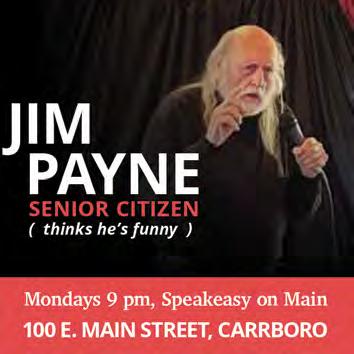

Software Engineer II, F/T at Truist Bank (Raleigh, NC) Deliver tech’lly complex solutions. Perform system integra tion support for all project work. Consult & partner w/ the business product owners to understand the end goal & offer solutions & recommendations during the dsgn. Dvlp customized coding, s/ware integration, perform analysis, configure solutions, using tools specific to the project or the area. Must have Bach’s deg in Comp Sci, Comp Engg, or related tech’l field. Must have 4 yrs of exp in s/ware
engg positions performing/utilizing the following: dvlpg of web-based s/ware/applications using various comp prgmg languages; performing s/ware testing & quality checks per QC guidelines; creating & maintaining ASP.NET based websites & their web applications; dsgn backend d/ base structures for web applications; generating complex stored procedures for s/ware maintenance purposes; & utilizing experience w/: Operating Systems: Windows 7/ XP/2003 & UNIX; .Net; C#; ASP.NET; VB.NET; MVC; Web Services; WCF; Entity Framework; Java; JQuery; KnockoutJs; HTML5; Bootstrap; PEGA; Moodys Risk Analyst; GIT; TFS; SSIS; SSRS; D/base: SQL Server 2008/2012 & Oracle 9i/10g; & Microsoft Azure. Email resume w/ cvr ltr to: Paige.Whitesell@Truist.com (Ref. Job No. R0068896)

